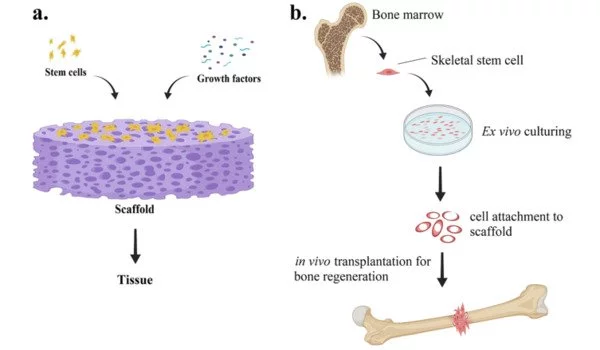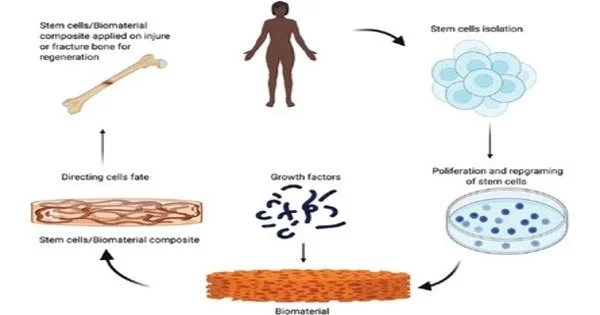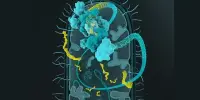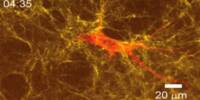Stem cells have the unique ability to differentiate into various cell types, making them an attractive candidate for tissue regeneration. One approach to promoting bone regeneration is to use an adhesive protein to attract and retain stem cells at the site of injury.
There are several adhesive proteins that have been identified as potential candidates for this application, including fibronectin, vitronectin, laminin, and collagen. These proteins have specific binding sites that can interact with receptors on the surface of stem cells, allowing them to attach and spread on the protein surface.
Researchers have created an osteogenic barrier coating material that improves the effect of guided bone regeneration (GBR) for implant placement.
The condition of the periodontium around the implant is one of the most important factors in the success of a dental implant. Dental implants with a higher long-term success rate require adequate and healthy alveolar bone. If a lack of alveolar bone makes implant placement difficult, the bone should be regenerated sufficiently to receive the implant, either before or during the implant surgery. A Korean research team’s development of osteogenic barrier coating material for implants is expected to improve the success rate of alveolar bone grafting.
This study was based on the joint research team’s long-term collaboration in the field of bone regeneration for implant placement. Its findings revealed the possibility of improving implant treatment success rates regardless of bone condition.
Professor Hyung Joon Cha
Three research teams led by Professor Hyung Joon Cha of the Chemical Engineering Department at Pohang University of Science and Technology (POSTECH), Professor Yun Kee Jo of the School of Convergence at Kyungpook National University (KNU), and Professor Sang Ho Jun of the Department of Oral and Maxillofacial Surgery at Korea University Anam Hospital together developed an osteogenic barrier coating material for dental implants that prevent the invasion of soft tissue cells, attracts osteoprogenitor cells including bone stem cells, and sustainably releases the loaded bone morphogenetic protein-2 (BMP-2), significantly facilitating bone regeneration.
GBR is widely used in the placement of dental implants. It keeps the space for bones to grow open and prevents non-osteogenic cells, such as fibroblasts, from populating bone defect sites, allowing the bone to grow without interference from non-osteogenic cells. However, for patients with insufficient bone quantity and quality, the GBR approach is still less likely to be successful and necessitates a longer treatment time. Depending on the configuration of the defect sites, preventing non-osteogenic cell invasion with barrier membranes alone is insufficient to significantly facilitate bone regeneration.

The collaborative research team first applied BMP-2 to the bio-engineered material, which contains RGD peptide, a cell recognitive motif capable of attracting cells, fused with mussel adhesive protein (MAP), which maintains strong adhesiveness in a wet environment. The team then applied it to the titanium mesh (Ti-mesh) membrane. According to the findings, the coated barrier membrane exhibited cell occlusivity, which prevented fibroblasts from permeating the membrane. The researchers also discovered that it induced a high level of bone differentiation inside the membrane in a short period of time by promoting the growth of mesenchymal stem cells and the release of BMP-2.
When the developed MAP-based barrier coating for guided bone regeneration was applied to a titanium membrane in a rat calvarial defect model, the coating nearly doubled the rate of bone tissue regeneration.
Professor Hyung Joon Cha, who led the study, stated, “This study was based on the joint research team’s long-term collaboration in the field of bone regeneration for implant placement. Its findings revealed the possibility of improving implant treatment success rates regardless of bone condition.” He went on to say that the findings of the study could be used to regenerate a variety of hard tissues.
















